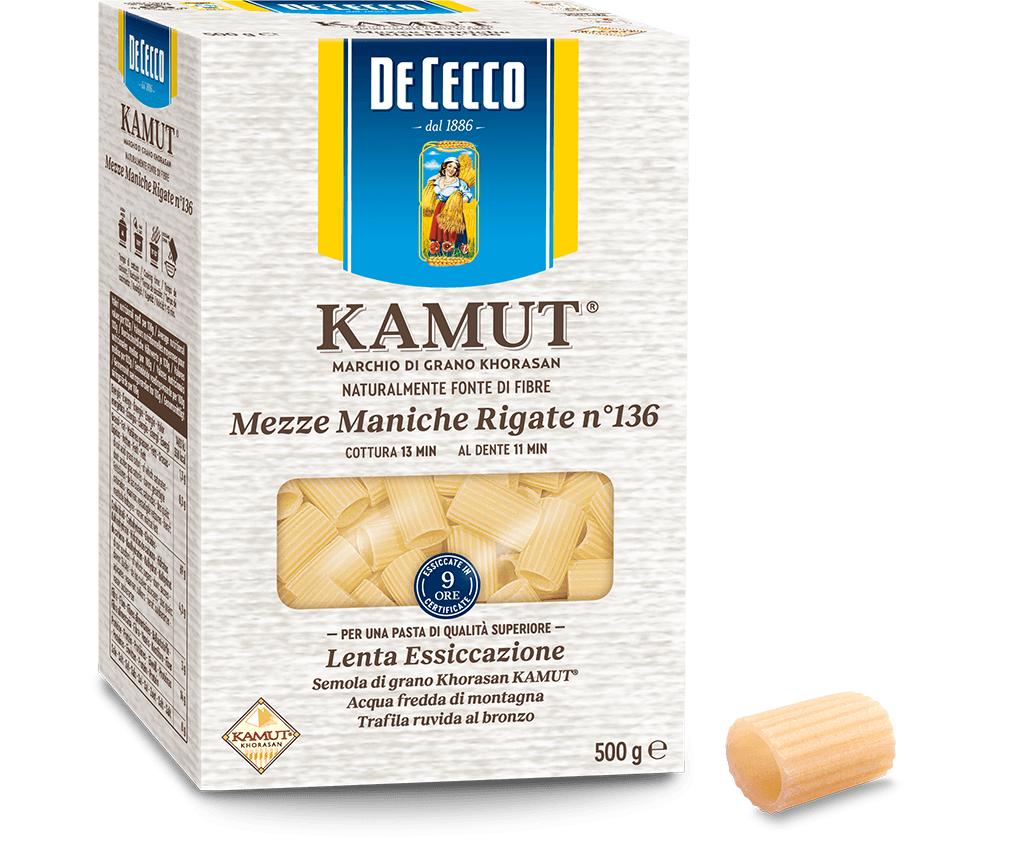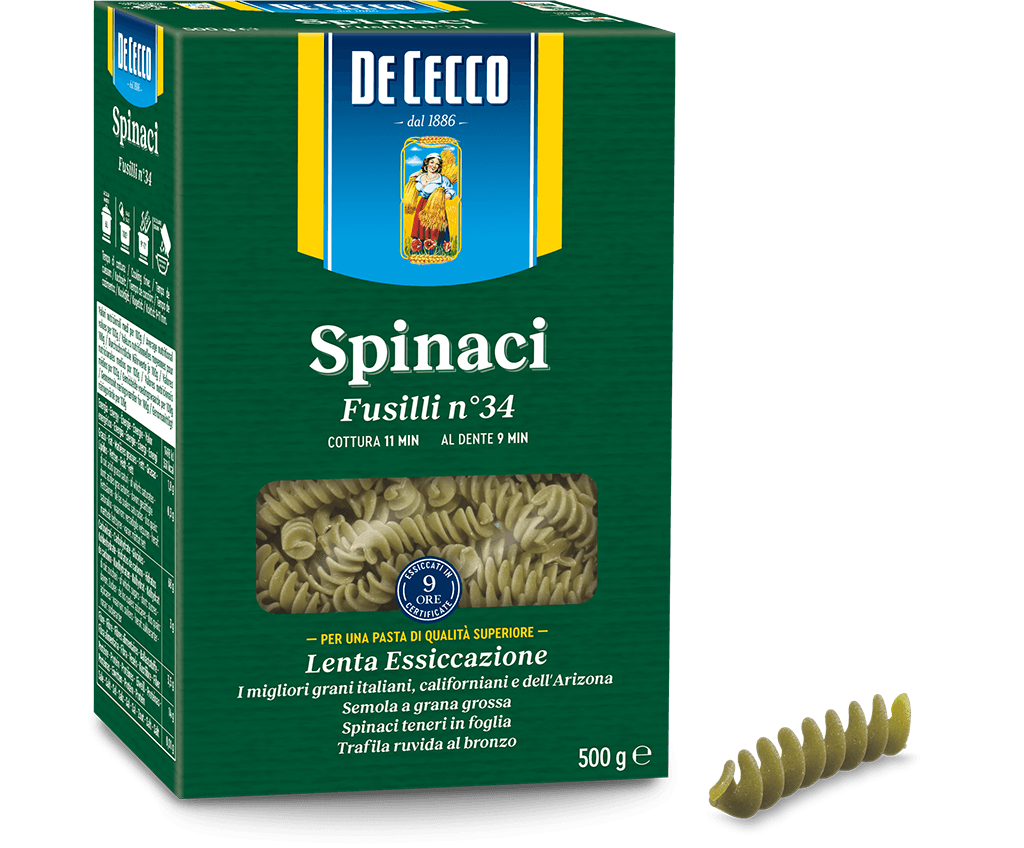Fusilli n° 34 con spinaci
Fusilli come from Campania and belong to the short, straight cut family of pasta.
In the past, Fusilli were made by hand according to a method that was passed down from one generation to the next. You had to rapidly twist a strand of spaghetti around a knitting needle with a skilled hand. The ability required to perform this procedure is reminiscent of that of spinners and as a matter of fact, the term "fusillo" comes from "fuso" (spindle) which was the tool used by spinners.
This pasta is particularly good with meat and fish based sauces or with condiments made with ricotta. It is also perfect with vegetable sauces too that are prepared with a tomato sauce with peppers, aubergines, olives and capers.
Available in 500g pack.
- Cooking time: 11 min - Al dente: 9 min
Our method
Attention, care, experience, quality at every stage: from our mill to your table.
Mezze Maniche Rigate n° 136 KAMUT® marchio di grano khorasan
Mezze Maniche Rigate are bigger than Mezzi Rigatoni, but just as good for capturing all kinds of sauces with their outer ridges which bring out the best in every recipe.
Their chunky shape makes them ideal for serving with hearty meat or fish sauces and for recipes which are tossed in the frying pan.
Available in 500g pack.s.






